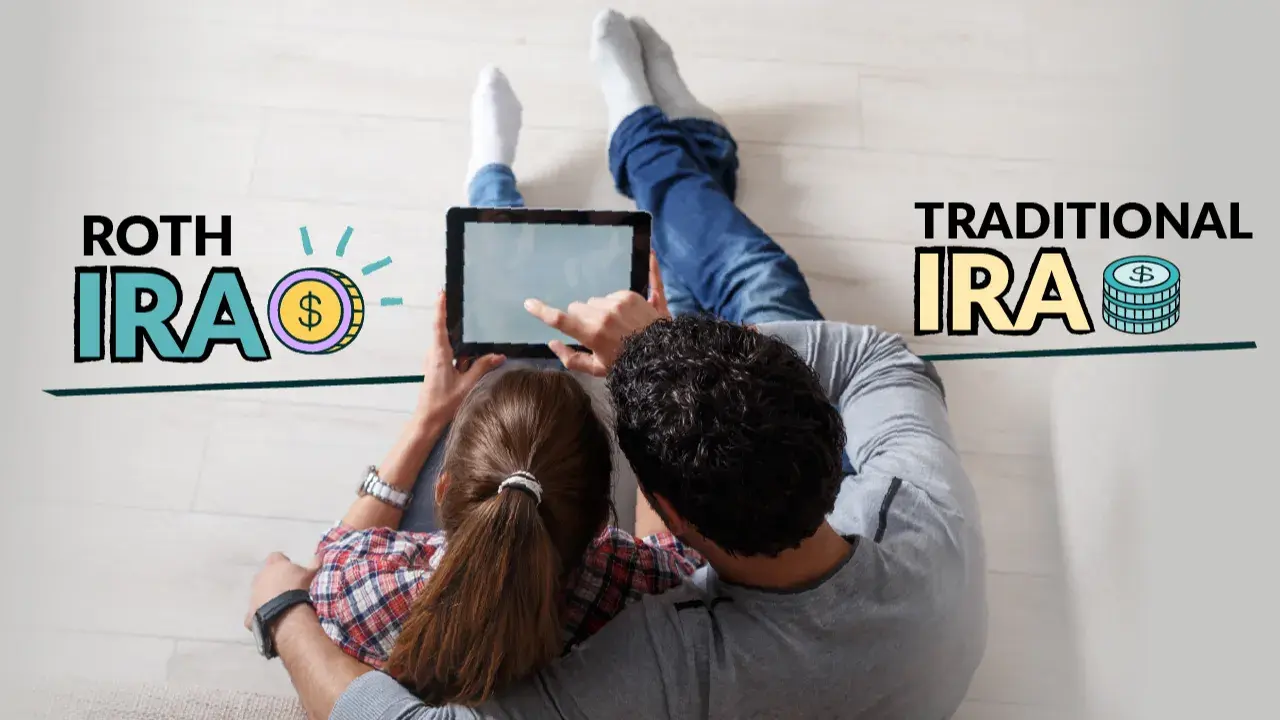Related Articles
Roth vs Traditional IRAs: Which Is Right for You?
Jenius Bank Team
Updated 1/16/2025
• Originally Published 2/27/2024
RetirementMoney Management
Both Roth and traditional IRAs may help you save for retirement, but they have a few differences.When it comes to saving for retirement, you may assume the only option you have is opening a 401(k) through your employer. While that may be a good option, it’s not the only one. Another option for retirement planning is an individual retirement account (IRA). You may open an IRA at any time to help you maximize your retirement savings and plan for your future. There are two main types of IRAs: Roth and traditional. Let’s look at the differences between the two and how each could impact your retirement savings.This information is not tax or investment advice. You should consult with a tax advisor and/or a qualified investment professional for advice specific to your particular circumstances.
If your MAGI is over the following limits, you’re unable to contribute to a Roth IRA in 2025:5
Key Takeaways
- IRAs may help you establish your retirement savings or maximize these efforts when used in conjunction with a 401(k) account.
- Traditional IRAs are available to anyone regardless of income, while Roth IRAs have income limits.
- Traditional IRAs offer a tax break in the near term with taxes owed at the time of withdrawal; Roth IRAs have you pay taxes now so you may withdraw funds tax-free in retirement.
IRA Overview
Before we dive into the differences between Roth and traditional IRAs, let’s take a quick look at how individual retirement accounts work. Similar to 401(k) accounts, IRAs may help you save for retirement and potentially grow your money through investments. IRAs also tend to offer a wider variety of investment options than 401(k) plans. Since IRAs are separate from your 401(k), you may be able to contribute to both an IRA and 401(k) in the same year. Opening an IRA could be helpful, even if you have a 401(k), for a variety of reasons. First, if you’re on track to max out your 401(k) contributions but want to save more that year, you could add to your IRA too. Leveraging the IRA as a tool may help you close a gap in your retirement savings or just get a little further ahead. Additionally, if you leave your job, you may want to take your retirement funds with you. Many plans allow you to roll 401(k) funds into an IRA, so having an IRA account already in place could come in handy!Of course, IRAs may also be your main retirement savings vehicle if you don’t have an employer-sponsored retirement account to lean on. Since your IRA is tied to you, not your employer, you’re able to continue contributing to the account throughout a lifetime of job changes.As you might expect, the IRS places contribution limits on IRA accounts. For 2025, the limits are $7,000 per year if you’re under 50 years old and $8,000 if you’re 50 and older.1 Also, keep an eye out for account management fees and investment management fees, as these could reduce your overall earnings.Traditional vs Roth IRAs: What’s the Difference?
There are a few fundamental differences between Roth and traditional IRAs that impact which account you may choose to open.IRA Eligibility
To open an IRA, the account owner must have earned income from a full-time job, self-employment, or a part-time job. Consult with a financial advisor to determine if you, or your spouse, is eligible to open an IRA.Additionally, non-working spouses may open a spousal IRA and contribute up to the contribution limit each year, provided they file a joint tax return, and their partner earns enough income to cover the contributions to the spousal IRA.2Your income determines which kind of IRA you’re able to contribute to. Roth IRAs have income limits in place that vary depending on your filing status and modified adjusted gross income (MAGI). These limits restrict who may directly contribute to a Roth IRA.3 On the other hand, traditional IRAs don’t have contribution restrictions based on income.4If your MAGI is over the following limits, you’re unable to contribute to a Roth IRA in 2024:5| Filing Status | Income Limit |
|---|---|
| Married filing jointly or qualifying widow(er) | Equal to or less than $240,000 |
| Married filing separately and you lived with your spouse during the year | Equal to or less than $10,000 |
| Single, head of household, or married filing separately and you did not live with your spouse during the year | Equal to or less than $161,000 |
| Filing Status | Income Limit |
|---|---|
| Married filing jointly or qualifying widow(er) | Equal to or less than $246,000 |
| Married filing separately and you lived with your spouse during the year | Equal to or less than $10,000 |
| Single, head of household, or married filing separately and you did not live with your spouse during the year | Equal to or less than $165,000 |
